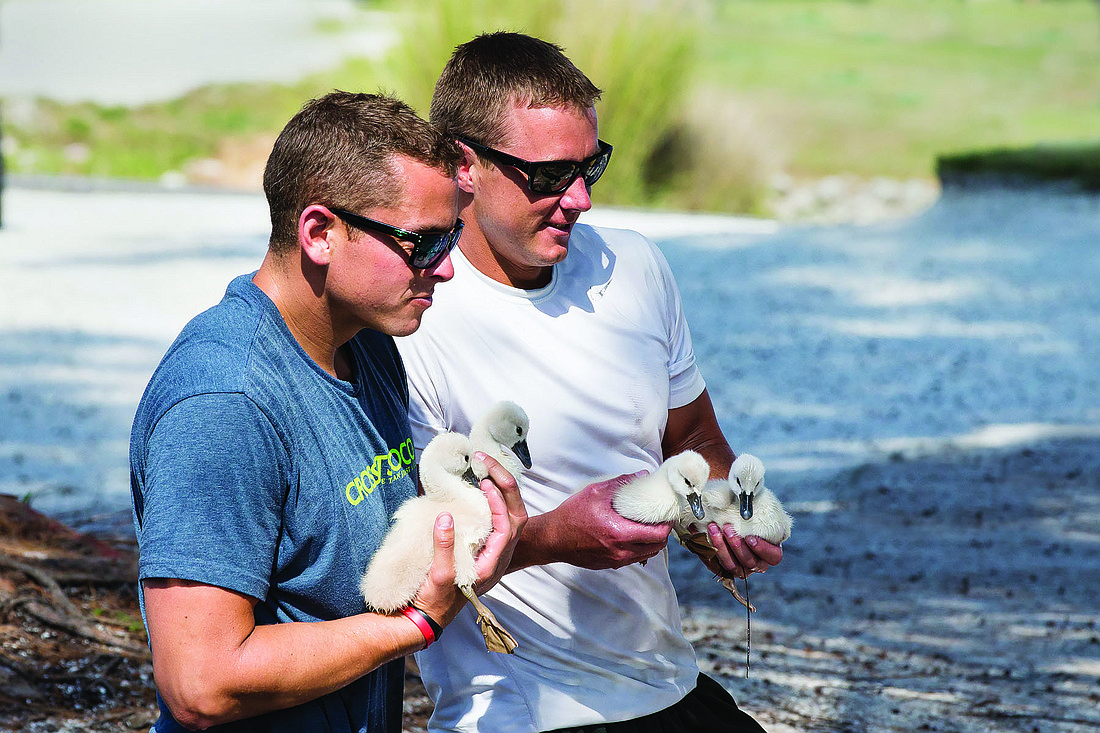- April 25, 2024
-
-
Loading

Loading

The latest generation of cygnets is surviving and thriving.
Five cygnets hatched from Stan and Wendy’s nest in early May and four hatched two weeks later from the nest of new parents Sully and Susie. All nine are still alive — adding to a family that experienced major growth last year after all six cygnets from the nest of Stan and Wendy survived.
According to unofficial swan keeper David Novak, the next nine weeks are critical to determining whether they survive.
But for now, all nine cygnets have a clean bill of health. On May 24, they received care from Lakeland veterinarian Dr. Geoff Gardner. They also had feather samples removed for gender testing and microchips implanted for identification purposes.
Before they could make the trip to Lakeland for veterinary care, however, there was another challenge: capturing the cygnets.
Stan and Wendy’s cygnets were captured as they crossed a land bridge with their parents. Stan was quite the nervous father as the process occurred. As Gardner cared for the five cygnets, Stan paced approximately 50 feet away, hoping for the quick return of his cygnets.
The reunion was a happy one: After Gardener cleared them for return, the cygnets swam immediately toward Stan. Then, the happy family headed south in search of Wendy.
The 1-week-old cygnets of Sully and Susie were captured with help from Bay Isles residents Ken Schneier and Cynthia Craig’s son, John Schneier, and five of his friends, all of who were in town for a bachelors’ week. By the time the four cygnets were rounded up and treated, it was dark, so they spent the night at Novak’s home before a 6 a.m. reunion with their parents the next day.
By Monday morning, both sets of parents were back to their normal roles of protecting, nourishing and teaching their cygnets.
The cygnets will be ready for placement in their own territories by November or December. The results of gender testing will determine where the young swans are placed.
Novak hopes to eventually place a same-sex couple in each territory and relocate additional cygnets to prevent overpopulation — a process that could take five to eight years, as current male-female pairs continue to produce cygnets. In late 2013, he began that process by pairing two females and two males and relocating a male-female pair to a Sarasota community.
Novak hopes to retain two female pairs for placement on the Islandside course, which would bring the Key to its planned population level with seven pairs.
Contact Robin Hartill at [email protected].